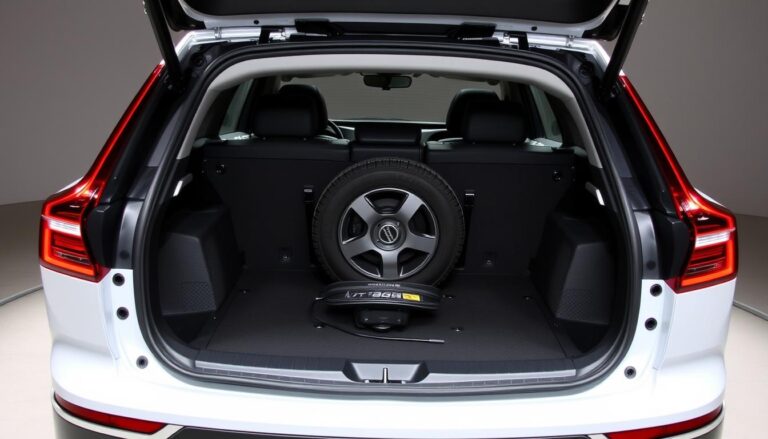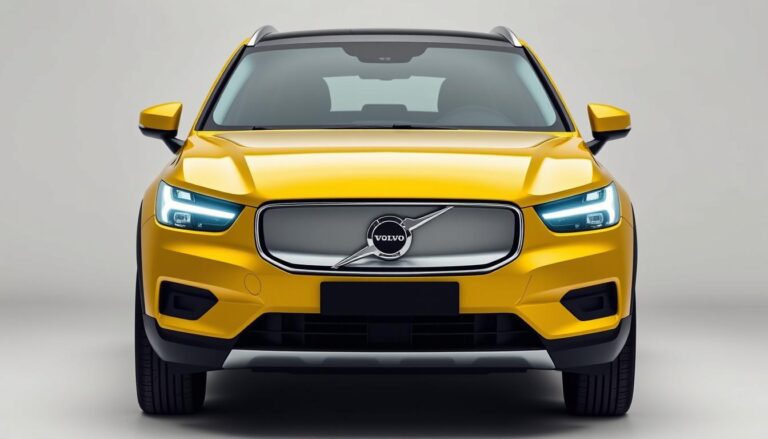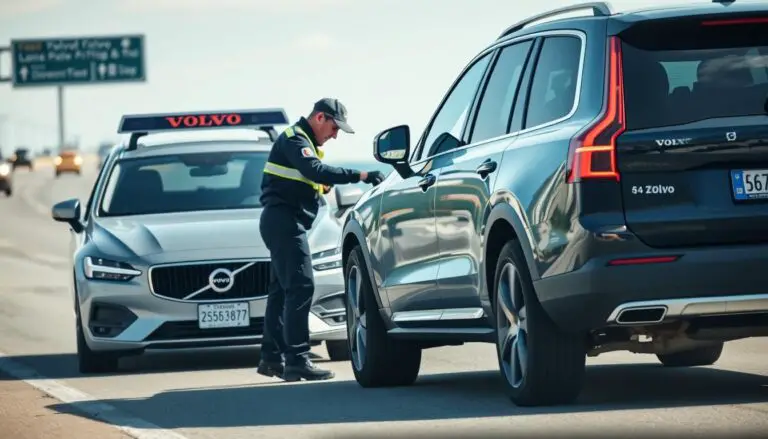Quick answer: Many recent Volvo models offer factory-equipped ACC, a driver-assist system that uses a radar sensor and camera to monitor traffic and keep a set speed or time gap.
How it works: The system slows or accelerates the car to match flow ahead, easing long highway drives and reducing fatigue. It is part of Volvo’s broader safety technology but is not a replacement for attentive driving.
Where to find it: ACC is available on popular models such as the XC40, XC60, XC90, S90, V90, and V90 Cross Country. Check model listings in the dealer inventory when shopping to confirm the package on a specific vehicle.
This section explains the feature in plain terms, outlines real-world benefits, and sets expectations about limits and driver responsibility. Use it to compare options when evaluating volvo cars today and to spot the control icons during a showroom walkaround.
Key Takeaways
- ACC uses radar and camera to maintain speed and spacing automatically.
- It improves comfort on highways but requires driver readiness to intervene.
- Available on XC40, XC60, XC90, S90, V90, and V90 Cross Country models.
- Consider this technology an advantage for smoother commutes and less fatigue.
- Confirm feature presence in the dealer inventory before a test drive.
Does Volvo Have Adaptive Cruise Control?
Yes. The setup uses a forward camera and radar to hold a set speed or a time gap to the vehicle ahead. It slows or speeds the car smoothly to keep your chosen distance.
How it behaves: When traffic clears, the system returns the car to your preset pace automatically. The feature is available on XC40, XC60, XC90, S90, V90, and V90 Cross Country models.
“The system supports the driver by managing speed and spacing, but it does not replace active supervision.”
Controls are integrated into the steering wheel, so switching from standard cruise is simple and intuitive. Remember, this is a driver‑assist system, not a collision‑avoidance tool. You must remain ready to brake or steer if conditions change.
- Works in traffic: Smooths stop‑and‑go driving and reduces fatigue.
- Easy to use: Same buttons as regular cruise control.
- Confirm fitment: Check the specific vehicle trim before purchase.
| Model | ACC Available | Notes |
|---|---|---|
| XC40 | Yes | Often standard on recent trims |
| XC60 | Yes | Included in many packages |
| XC90 | Yes | Paired with other safety tech |
How Volvo Adaptive Cruise Control Works and What It Includes
Radar and a forward camera work together to judge distance and the driver display reports the system state. The sensors monitor lane markings and measure the gap to the vehicle ahead. When traffic slows, the system gently reduces speed to keep the selected time interval.
Steering‑wheel buttons control activation and tuning. Press the ACC button on the left keypad to put the feature in standby. Use the arrow keys to select the mode, then tap “+” or “−” to set speed. Short presses change speed by 5 mph; long presses adjust by 1 mph for fine tuning.
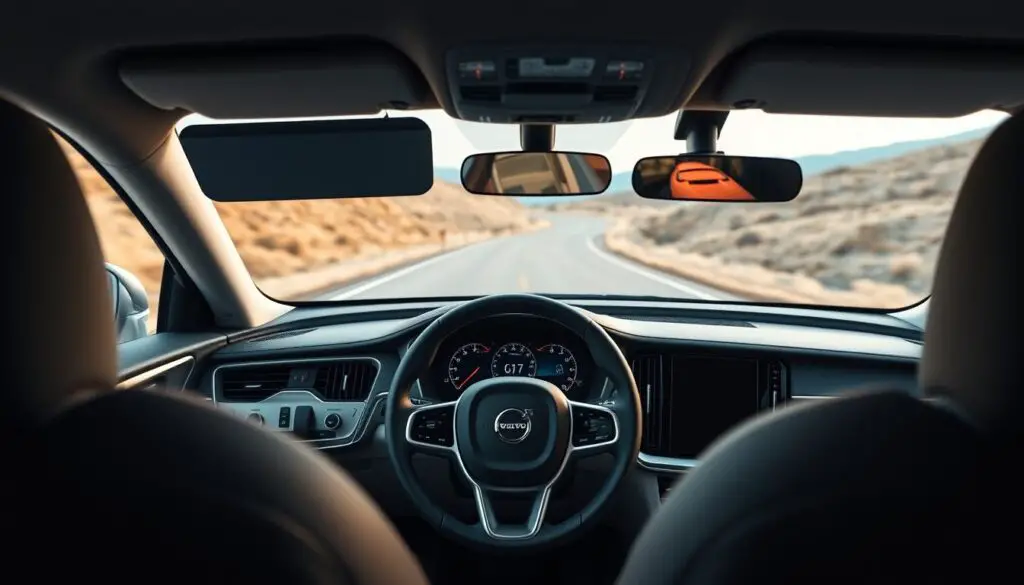
Pilot Assist builds on the base function by adding steering assist to help center the vehicle in its lane. Pilot Assist can operate from a standstill up to 80 mph and shows a green steering‑wheel icon when lane support is active. Second‑generation Pilot can provide steering assistance even without a lead car on well‑marked roads.
- Parts: forward radar + camera + clear display cues.
- Benefit: maintains a chosen gap, returns to preset speed when traffic clears.
- Use: keep hands on the wheel; view status on the driver display.
Using ACC and Pilot Assist Today on Volvo Cars
Learn how to engage ACC and Pilot Assist from the steering‑wheel keypad and what the driver must check before using them.
Activate from the steering wheel: Press an arrow on the left keypad to place ACC in standby. Use the right arrow to switch to Pilot Assist, then press the center Cruise Control button to activate. A green steering‑wheel icon on the driver display or head‑up display confirms steering assist is active.
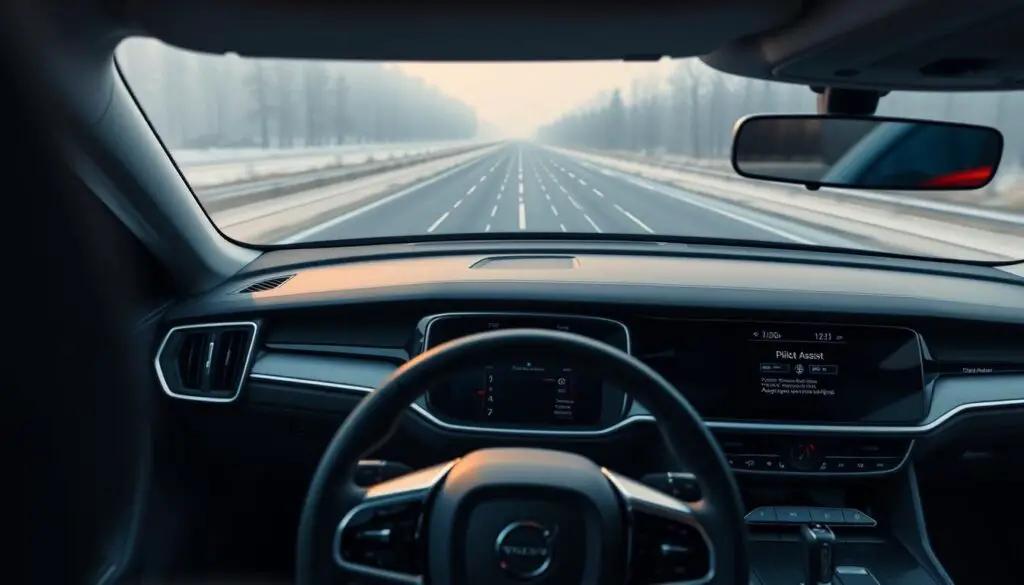
Operational limits and safety
ACC requires at least 9 mph (15 km/h), a fastened seatbelt, and closed doors to engage. Manual cruise typically only works above 20 mph (30 km/h).
Safety note: The system is an assist feature, not a collision‑avoidance tool. It may not detect pedestrians, animals, bicycles, or motorcycles. You remain responsible for braking and steering.
- Use the “+” and “−” buttons on the wheel to fine‑tune set speed while watching the display for mode and gap info.
- Pilot Assist offers lane‑centering support up to 80 mph on well‑marked roads but needs driver attention.
- Keep radar and camera parts clean; follow on‑screen prompts and check inventory listings to confirm availability on the vehicle you plan to buy.
Conclusion
Adaptive cruise systems on many modern models pair radar and a forward camera to hold speed and set distance while you stay ready to intervene.
Pilot Assist adds light steering support up to 80 mph and signals activation with a green steering‑wheel icon, improving long‑drive comfort on well‑marked roads.
Want to try it? We’ll walk you through the parts, controls, and how to set follow distance and speed during a test drive.
Considering a plug‑in hybrid or other hybrid models? These systems pair well with electrified drivetrains. For financing and ownership resources, visit centerfinance, hybridshop, or usabout to explore options.
FAQ
Does Volvo have adaptive cruise control?
Yes. Many modern Volvo models include an advanced adaptive cruise system that keeps a set speed while automatically adjusting to maintain a safe following distance from the vehicle ahead. This feature is common on sedans, SUVs, and plug-in hybrid variants across the current lineup.
How does Volvo adaptive cruise technology work and what components are involved?
The system uses radar and camera sensors paired with the driver display to monitor traffic. It maintains your chosen speed and distance by automatically reducing throttle or applying gentle braking. The in‑car display shows the selected set speed, following distance, and a visual of the vehicle in front.
What steering‑wheel controls operate the system?
Buttons on the steering wheel let you set the speed, increase or decrease it, and adjust following distance. An ACC button and directional arrows make activation and fine adjustments quick and intuitive while driving.
What’s the difference between Pilot Assist and adaptive cruise?
The basic system manages speed and distance. Pilot Assist adds lane‑centering support, helping steer within lane markings on well‑painted roads. Pilot Assist can brake and accelerate like adaptive cruise but also provides gentle steering input for longer highway drives.
How do I activate ACC or Pilot Assist in a Volvo today?
Activate from the steering wheel using the ACC button or the Pilot Assist switch. When Pilot Assist is engaged, a green steering‑wheel icon appears on the driver display. Follow prompts in the center display to confirm system availability and settings.
Are there operational limits and safety requirements?
Yes. The system typically requires a minimum speed to operate and will disengage if doors are open or seatbelts are not fastened. It is a driver‑support feature, not a full collision‑avoidance system; the driver must remain attentive and ready to take control.
Is adaptive cruise available on hybrid and plug‑in hybrid models?
Many hybrid and plug‑in hybrid cars in the lineup include the feature either as standard or part of option packages. Availability depends on model and trim, so check specific inventory or consult a dealer for configuration options.
Does the system work in heavy traffic and bad weather?
The system performs well in moderate traffic but has limitations in heavy stop‑and‑go conditions and reduced visibility. Radar and cameras can be affected by heavy rain, snow, or dirt on sensors; regular maintenance and clearing sensor areas help maintain reliability.
Can the system bring the car to a complete stop?
Many versions can slow to a complete stop and resume driving in light traffic, but behavior varies by model year and software. Some models require a tap of the accelerator or the Resume button to restart after a long stop.
How should drivers treat adaptive cruise and Pilot Assist for safety?
Treat both as driver aids. Keep hands on the wheel, monitor the road, and be ready to intervene. Regularly update vehicle software, keep sensors clean, and follow recommended service intervals to ensure dependable performance.

